Supplements and Cannabis Use: Whole Body Health & Wellness Guide
New worlds are opening up within the medicinal cannabis industry. HealthMJ is optimizing whole body health and wellness by expanding into natural supplement reviews and product guides to help benefit the community in living a higher quality of life.
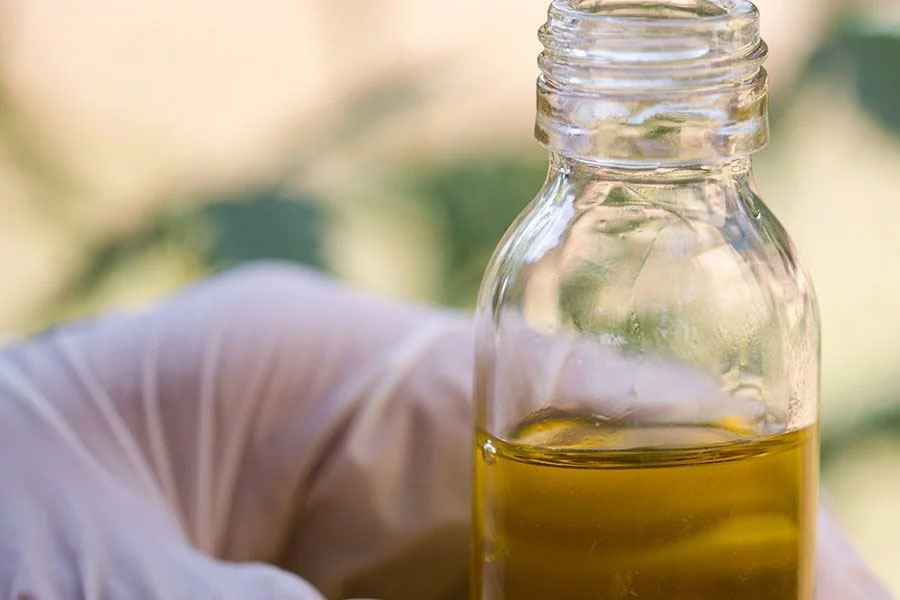
Beginner's Guide to Healthy Cannabis Use and Supplements
HealthMJ is a cannabis-centric health and wellness news publication. As many may or may not know, we are super high on advocating cannabis use for all of its therapeutic effects and medicinal benefits. However, as the cannabis supplementation industry grows and matures, HealthMJ recognizes, acknowledges and comprehends that the cannabis community's conversation continues onward to whole body health and wellness.
While the day one vision of becoming a leading cannabis and CBD news media portal will remain in tact, the research team at HealthMJ is excited to embark upon new endeavors that expand into a much more universal health approach. The amazing journey CBD has enjoyed to becoming the number one selling herbal ingredient in the natural sales channel in 2019 really opened the eyes of everyone around the world as to what is possible when something works and the science stacks up. But in reality, despite CBD being the most popular extract in the world, its sales were expected to possibly surpass $1 billion dollars in 2019, and the dietary supplement industry is a $45+ billion market annually. These stats are very telling.
In fact, the cannabis plant is primarily known and associated with being a medicinal plant above all other recreational uses. To stay true to our HealthMJ name and emerging brand, the dedicated research team and executive editorial staff is proud to announce we are venturing into more natural health supplement reviews, wellness products and lifestyle program guides in 2020 and beyond. In a quest to map out the entire cannabis and CBD ecosystem; from the top oils, gummies, skincare, topicals, pets, energy drinks, pain relief products, subscription boxes, and so much more coming, the underlying theme is all about doing what is best for user's health and well-being.
For years, cannabis and all of its amazing compounds and components have been the core focus here. But as the demand for cannabis grew throughout the world, the realization that HEALTH was the foundational piece to it all became very evident with the rise of CBD. With that being said, HealthMJ is venturing into a more broad view of HEALTH, meaning a completely integrated lifestyle of using dietary nutritional supplements along side using cannabis. Whether smoking marijuana or consuming hemp-derived CBD oil tinctures or any type of cannabidiol-infused products, every user's health is on the line at the end of the day.
As a very fitting introduction to the HealthMJ health supplement reviews and wellness program guide extension we are rolling out, there is no better way to get started than beginning to break down C-A-N-N-A-B-I-S from a very fundamental health level.
The HealthMJ Way as we have called it, is officially here. From this day forward, we will no longer ONLY be about cannabis. The whole body health and wellness movement HealthMJ is putting forward from this day on will be very insightful, intellectual and hopefully impactful to the greater cannabis community as so many people are attracted to marijuana, CBD, THC, hemp and all the emerging cannabinoids for its natural well-being effects. This is a great responsibility we will not take lightly and will only be releasing the best guides, news and reviews that matter and can be highly beneficial to the world.
HealthMJ is all about advanced living; realizing health is thy true wealth, our intentions are pure and sound, and want to spread awareness, education and innovation towards living an optimized whole body wellness lifestyle. The research, reviews and recommendations HealthMJ formulates will be catered to all of our incredible supporters and followers from around the world. There is no better way to introduce and transition into HealthMJ's expansion of nutritional supplements and lifestyle enhancement guides than to start with an extremely detailed overview of cannabis health and wellness.
Cannabis Health & Wellness: The Ultimate Guide to Therapeutic Benefits of Marijuana, CBD, THC, and More

Over the past two decades, people have started to increasingly see marijuana as medicine.
A growing number of studies have connected marijuana to powerful benefits. Today, millions of people use marijuana for everything from anxiety to cancer relief.
Medical marijuana is legal in most first world countries. Some jurisdictions have legalized recreational use of marijuana.
It’s not just about marijuana: the cannabis plant has hundreds of other chemical compounds called cannabinoids.
Cannabinoids like CBD are linked with their own powerful health benefits. CBD has become one of the trendiest supplement ingredients in recent years.
Is there any actual science behind cannabis’s health and wellness benefits? Or is it all just over-hyped? Today, we’re explaining everything you need to know about cannabis health and wellness.
Contents
What is Medical Marijuana?
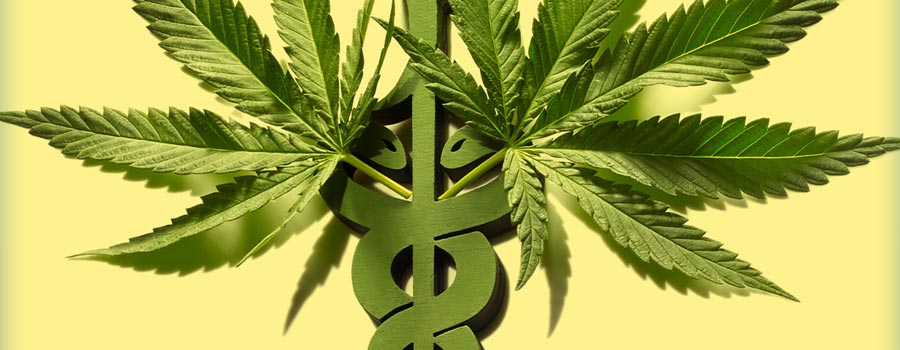
Medical marijuana is made from the dried parts of the Cannabis sativa plant. Humans have used the plant as an herbal remedy for centuries. Today, people use marijuana to treat diseases or relieve symptoms.
In the United States, marijuana is illegal at the federal level. Many states, however, have legalized medical marijuana: with the prescription of a physician, you can use medical marijuana to treat specific conditions.
Of course, some states have also legalized recreational use of marijuana, in which case you don’t need a prescription. You just need to be of legal age.
To be clear, the United States Food and Drug Administration, the government agency that regulates medicines, has not approved marijuana to treat any conditions.
However, the FDA and other national governing bodies have approved Epidiolex, Sativex, and other synthetic forms of cannabis to treat specific conditions. Epidiolex is a synthetic form of CBD, while Sativex is a combination of THC and CBD.
What’s in Marijuana? Why Does It Have Medicinal Properties?
How can one plant have such powerful purported health benefits? What makes medical marijuana a medicine instead of just a normal drug?
Marijuana has chemical compounds called cannabinoids. There are hundreds of cannabinoids in the plant. In fact, new cannabinoids are being discovered every year.
You have probably already heard of two types of cannabinoids, including:
- Delta-9-Tetrahydrocannabinol (THC)
- Cannabidiol (CBD)
THC is the compound within cannabis that gets you high. Many marijuana strains advertise high concentrations of THC for a more powerful high.
CBD, meanwhile, does not have any mind-altering effects, but it still impacts the endocannabinoid system. Growing research suggests that CBD could have power anti-anxiety effects, anti-nausea benefits, and more.
Ways to Consume Medical Marijuana
There are many ways to take medical marijuana, including:
- Inhaling a vaporized spray (vaping)
- Smoking it
- Taking a pill
- Taking a liquid (say, a sublingual drop)
- Baking it into foods (an edible)
Understandably, the consumption method can change everything about marijuana. It can change the symptoms of marijuana, for example, or your side effects. Some people are also restricted to specific types of medical marijuana. You might have trouble smoking marijuana because of a lung problem, for example, but have no issue taking sublingual drops twice a day.
What Happens When Cannabis Enters Your Body?

If cannabis is medicine, then what does it do when it enters your body? How does cannabis actually affect your bodily functions?
The cells in your body have receptors – including a special type of receptor called a cannabinoid receptor.
Scientists know we have cannabinoid receptors in the brain and the immune system. However, the exact process of how cannabis affects these receptors is unclear.
There are cannabinoid receptors all over your body. Many of your internal organs have cannabinoid receptors, for example, which is why cannabis supporters argue that cannabis impacts every part of your body.
What Does Medical Marijuana Treat?
Supporters argue that medical marijuana treats all different conditions. Typically, however, doctors will prescribe medical marijuana for one of the following conditions:
- Alzheimer’s
- Appetite Loss
- ALS
- Cancer
- Crohn’s Disease
- Epilepsy
- Seizures
- Hepatitis C
- AIDS
- Glaucoma
- Multiple Sclerosis
- Muscle Spasms
- Post Traumatic Stress Disorder (PTSD)
- Schizophrenia
- Other Mental Health Conditions
- Chronic Pain
- Nausea
- Wasting Syndrome
Research has reinforced the idea that cannabis can treat all of these conditions. However, research is particularly supportive of cannabis’s ability to work as a painkiller, to stop vomiting during chemotherapy, to relieve multiple sclerosis symptoms, and to treat a few rare forms of epilepsy.
Benefits of Cannabis: What Does Research Say?
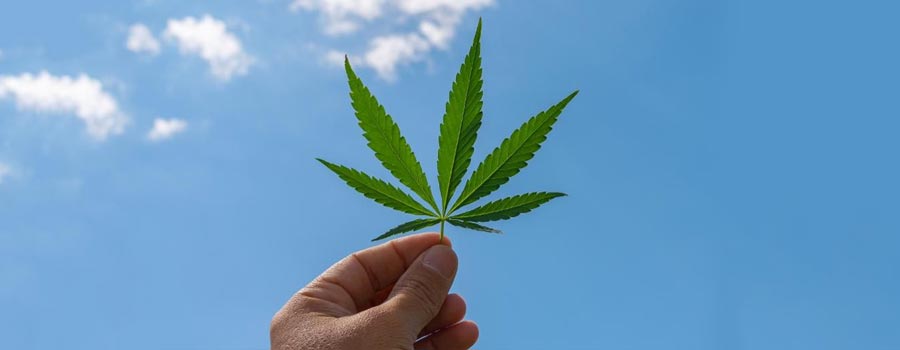
There have been thousands of studies on medical marijuana. However, medical marijuana has repeatedly proven its value for treating certain conditions, including all of the following:
- Reduce anxiety
- Reduce inflammation and relieve pain
- Control nausea and vomiting caused by cancer or chemotherapy
- Kill cancer cells and slow the growth of tumors
- Relax tight muscles in people with MS
- Stimulate appetite and improve weight gain in people with cancer and AIDS
Below, we’ll discuss some of the biggest and best studies on marijuana, including the specific effects linked to THC, CBD, and the cannabis plant as a whole.
Risks of Medical Marijuana
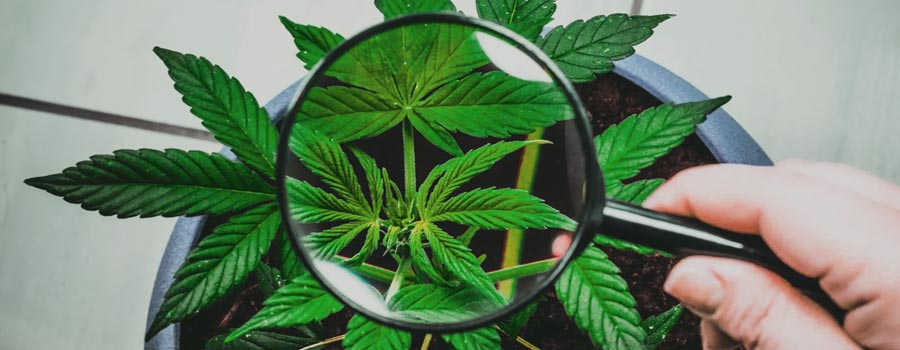
Medical marijuana is generally well-tolerated, which is why an increasing number of jurisdictions are approving medical or recreational use of marijuana.
However, there are still plenty of risks of medical marijuana. People who smoke marijuana could develop breathing problems, for example, including chronic coughing or bronchitis.
There also seems to be a link between marijuana and psychotic disorders like schizophrenia. Younger people who smoke marijuana have a higher likelihood of developing schizophrenia.
Meanwhile, women who smoke marijuana while pregnant could impact the baby’s health and development.
Research also indicates a connection between cannabis use and car accidents.
Cannabis supporters, of course, will argue that these risks are small compared to pharmaceutical drugs. We’ll talk more about the scientifically-proven side effects of marijuana down below.
FDA-Approved Versions of Cannabis: Legal Cannabis Drugs

The Food and Drug Administration (FDA) has not approved marijuana for medicinal use. However, the FDA has approved three related compounds for specific conditions.
Specifically, the FDA has approved synthetic cannabinoids like dronabinol or nabilone. Doctors may prescribe nabilone to treat nausea caused by chemotherapy, for example, while dronabinol is prescribed to AIDS patients to boost appetite.
The FDA has also approved a synthetic version of cannabidiol (CBD) called Epidiolex. In 2018, the FDA fast-tracked the synthetic CBD drug to treat two rare kinds of epilepsy. Multiple studies confirmed that Epidiolex worked, so the FDA pushed it to market as quickly (and safely) as possible.
There’s also Sativex, a cannabis-based drug containing a 1:1 ratio of THC and CBD, delivered via an oral (mouth) spray. Sativex has been approved as a treatment for neuropathic pain in patients with multiple sclerosis.
Why Don’t We Know More? Two Problems with Marijuana Research
Traditional drugs are studied extensively before hitting the market. Drug-makers spend millions getting these drugs through the pipeline until they hit the market.
Cannabis has been used for centuries. It’s been part of mainstream culture for decades. Marijuana is fully legal for millions of people around the world. So why don’t we know more about medical marijuana? Why isn’t medical marijuana as extensively studied?
There are two main problems with marijuana research:
Problem 1) Legality Issues as a Schedule I Narcotic
The United States and other jurisdictions have banned marijuana federally, making it difficult for publicly-funded institutions – like universities – to research the drug without considerable regulatory oversight.
The United States Drug Enforcement Administration (DEA) considers marijuana to be a Schedule I narcotic, putting it in the same category as heroin, LSD, and ecstasy. As a Schedule I narcotic, the DEA believes marijuana is “likely to be abused and lacking in medical value”. This label has historically made it difficult to study marijuana. Today, researchers need a special license to study it.
Unfortunately, there’s little chance that marijuana’s Schedule I status changes in the near future. The DEA recently considered reclassifying marijuana as a Schedule II drug – like Ritalin or oxycodone – but decided to keep it as a Schedule I drug.
Problem 2) Different Strains, Types, and Administration Methods
Even if marijuana is legalized worldwide, there may still be issues with marijuana research. Namely, all marijuana isn’t equal. It affects people in different ways. Different strains have considerably different levels of cannabinoids. Tolerance varies between individuals. Some consumption methods work for some people but not others. All of these variables making marijuana research a nightmare for science, which prizes standard doses and careful control.
Medical Marijuana Could Be an Alternative to Opioids and Painkillers
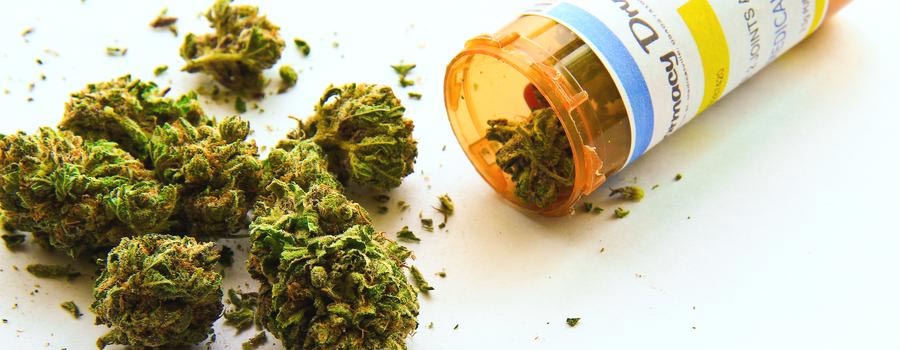
In jurisdictions where medical marijuana has been legalized, prescriptions for traditional pain medicine tends to drop. Researchers have also found that overdose deaths drop in states where marijuana is legal.
“Numerous studies have shown that legal marijuana access is associated with reduced opioid overdose rates,” explained Forbes in a writeup in 2018, linking to a study finding that
“marijuana is a far less addictive substance than opioids.”
It’s not a conspiracy theory to say that pharmaceutical companies oppose marijuana legalization. It’s a fact. In 2016, Insys Therapeutics, which makes products containing fentanyl and other opioids, as well as a synthetic version of the cannabinoid THC, donated $500,000 to help defat a marijuana legalization measure that appeared on Arizona’s ballot. For “Big Pharma”, marijuana legalization represents a serious threat to business.
“I think medical marijuana could be a treatment for a lot of folks,” explained Senator Kirsten Gillibrand of New York in 2018. “A lot of veterans have told us that this is the best treatment for them. I do not see it as a gateway drug.”
Gillibrand specifically accused pharmaceutical companies of attacking legalization efforts:
“To them it’s competition for chronic pain, and that’s outrageous because we don’t have the crisis in people who take marijuana for chronic pain having overdose issues. It’s not the same thing. It’s not as highly addictive as opioids are.”
Which States Have Legalized Medical Marijuana?
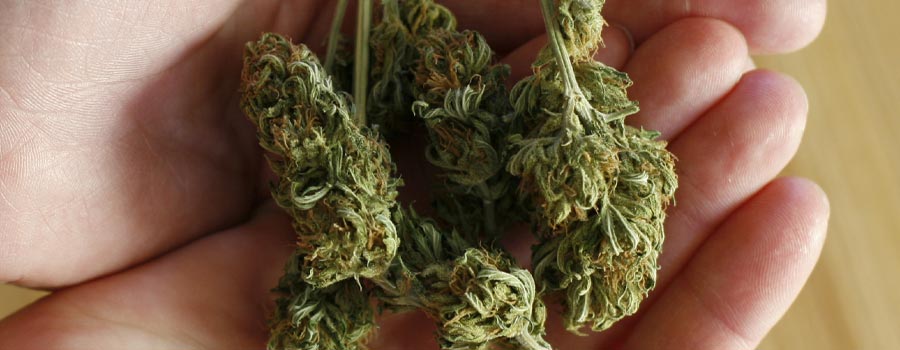
U.S. states that allow medical marijuana as of January 2020 include:
- Alaska
- Arizona
- Arkansas
- California
- Colorado
- Connecticut
- Delaware
- Washington, D.C.
- Florida
- Georgia
- Hawaii
- Illinois
- Louisiana
- Maine
- Maryland
- Massachusetts
- Michigan
- Minnesota
- Missouri
- Montana
- Nevada
- New Hampshire
- New Jersey
- New Mexico
- New York
- North Dakota
- Ohio
- Oklahoma
- Oregon
- Pennsylvania
- Rhode Island
- Utah
- Vermont
- Washington
- West Virginia
In total, 34 states (and Washington, D.C.) have legalized medicinal marijuana.
States, where medical marijuana continues to be illegal, include Alabama, Georgia, Idaho, Indiana, Iowa, Kansas, Kentucky, Mississippi, Nebraska, North Carolina, South Carolina, South Dakota, Tennessee, Texas, Virginia, Wisconsin, and Wyoming.
Which States Have Legalized Recreational Marijuana Usage?
Marijuana is fully legal in certain states, which means any adult over the legal age (21) can buy medical marijuana.
States with full legalization or decriminalization of marijuana include:
- Alaska
- California
- Colorado
- Washington, D.C.
- Illinois
- Maine
- Massachusetts
- Michigan
- Nevada
- Oregon
- Vermont
- Washington
In some of these states, marijuana is considered legal because it has been decriminalized. In other fully legal states, marijuana is considered legal because it’s sold through the government and taxed.
Many states have also reduced the criminalization of marijuana (but haven’t completely removed it), including Connecticut, Delaware, Hawaii, Maryland, Minnesota, Mississippi, Missouri, Nebraska, New Hampshire, New Mexico, New York, North Carolina, North Dakota, Ohio, and Rhode Island, for example, have all reduced the criminalization of marijuana.
Which Countries Have Legalized Medical Marijuana?
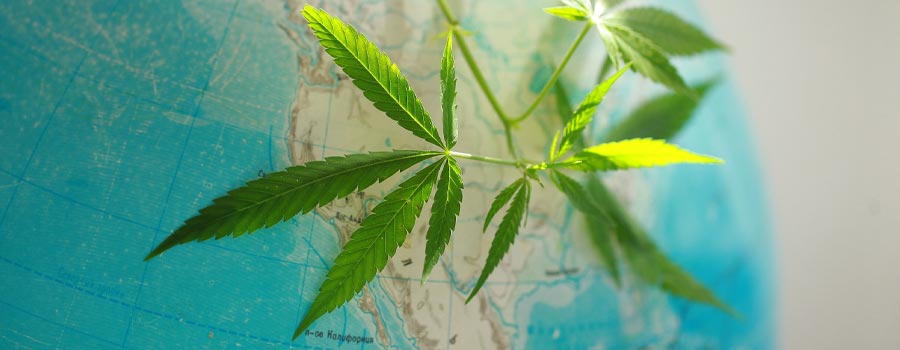
The United States is unique: each state can legalize or ban marijuana according to state law. Internationally, however, marijuana legalization is generally a federal issue. It’s either legal or illegal at a nationwide level.
Countries that have approved medical marijuana include:
- Canada
- The United Kingdom
- Ireland
- Norway
- Finland
- Germany
- Netherlands
- Poland
- Lithuania
- Czech Republic
- Italy
- Switzerland
- Greece
- North Macedonia
- Israel
- Cyprus
- Portugal
- Colombia
- Brazil
- Peru
- Uruguay
- Argentina
- Chile
- Australia
- New Zealand
- Thailand
- Sri Lanka
- Zambia
- Zimbab
Which Countries Have Legalized Recreational Use of Marijuana?
As of January 2020, all of the following countries have legalized recreational use of marijuana at the national level. In countries like Canada, marijuana is now sold by the government and taxed. In other countries, like Belize or Jamaica, weed is decriminalized, which means it’s not illegal to smoke it, although it’s not necessarily sold by the government.
Countries where recreational marijuana is legal or completely decriminalized include:
- Canada
- Uruguay
- Jamaica
- Belize
- Argentina
- Colombia
- Ecuador
- Peru
- Netherlands
- Switzerland
Marijuana laws change regularly worldwide. The laws above should be accurate as of January 2020. However, we recommend double-checking before you light up. We’re not responsible if you get into legal trouble.
Benefits of Cannabis: Historical Use

The use of medicinal cannabis goes back to ancient times. Medical marijuana isn’t just centuries old: it’s millennia-old!
Physicians in ancient civilizations mixed cannabis into medicines. Cannabis seemed to be particularly popular for treating pain and other ailments.
The first recorded usage of the cannabis plant dates back to Taiwan 10,000 years ago. The ancient Chinese used the cannabis plant for fiber.
In the early days, human civilizations around the world likely used hemp seed as food, then used hemp to create fiber or rope. Because hemp was a prevalent crop, it also seems likely that medical use of marijuana developed around the same time: ancient civilizations would have consumed the hemp plant and recognized its impact on the mind and body.
In fact, we have proof of ancient civilizations using cannabis as medicine. The oldest Chinese pharmacopeia, “Shennon’s Materia Medica Classic”, describes cannabis as a medicine. That pharmacopeia dates all the way back to 100 A.D.
The first recorded person to use cannabis as an anesthetic, meanwhile, was early Chinese surgeon Hua Tuo (140-208). He ground the plant into a powder, then mixed it with wine and gave it to patients before surgery.
In fact, the Chinese term for anesthesia today still roughly translates to “being stoned”. Anesthesia, in Chinese, literally translates to “cannabis intoxication”.
In other words, from the early days, ancient Chinese individuals seemed to recognize the effects of cannabis. They know it affected the body. It also seems they were using a strong strain of cannabis: the strain was so strong that it could be used as an anesthesia.
“Such a strong drug, however, suggests that the Chinese pharmacists had now obtained from far to the southwest not THC-bearing Cannabis sativa but Cannabis indica, so strong it knocks you out cold,” wrote American archaeologist Elizabeth Wayland Barber. Barber and other scholars agree that China knew about the narcotic properties of marijuana from at least the first millennium B.C.
Cannabis continues to be prized in traditional Chinese medicine. Cannabis is one of the 50 “fundamental” herbs in traditional Chinese medicine. In fact, traditional Chinese medicine textbooks describe how to use every part of the plant – from the flowers to the seeds to the pressed juice:
“Every part of the hemp plant is used in medicine…The flowers are recommended in the 120 different forms of disease, in menstrual disorders, and in wounds. The achenial…stimulate the nervous system…The seeds…are considered to be tonic, demulcent, restorative, laxative…They are prescribed internally in fluxes, post-partum difficulties…Externally they are used for eruptions, ulcers, favus, wounds, and falling of the hair…The oil is used for falling hair, sulfur poisoning, and dryness of the throat….The stalk, or its bark, is considered to be diuretic…The juice of the root is…thought to have a beneficial action….An infusion of hemp…is used as a demulcent drink for quenching thirst and relieving fluxes.”
In other words, traditional Chinese medicine recognized that different parts of the hemp plant not only had beneficial effects, but they could also impact different parts of the body. The entire plant was prized.
Marijuana’s medical benefits were also recognized outside of ancient China.
Researchers found cannabis and other herbal medicines in a grave dating back to 2200 B.C.E. in the Netherlands, for example. Researchers concluded that the ancient civilization in the area had mixed pollen, cannabis, and other herbal compounds to create a natural painkiller.
In ancient Egypt, meanwhile, a paper from 1550 B.C.E. describes medical cannabis. Cannabis and the hemp plant are also found in various other ancient Egyptian scrolls. There’s documented evidence that the ancient Egyptians used hemp or cannabis in suppositories to relieve the pain of hemorrhoids. They also used cannabis to treat sore eyes.
In ancient India, cannabis played a crucial role in Ayurvedic (ancient Indian) medicine, where it was used to treat insomnia, headaches, gastrointestinal disorders, and more.
The ancient Greeks used cannabis to dress wounds and sores on their horses, while humans used dried cannabis leaves to treat nose bleeds. The Greeks also described steeping the green cannabis seeds in water or wine and then using the warm extract as a topical anti-inflammatory.
In the medieval Islamic world, Arabic physicians used Cannabis sativa extensively as a medicine, and there’s documented evidence of its use from 800 all the way to the 1700s. Arabic physicians prized cannabis for its anti-inflammatory and pain-relieving effects, among other benefits.
Cannabis in Modern Medicine
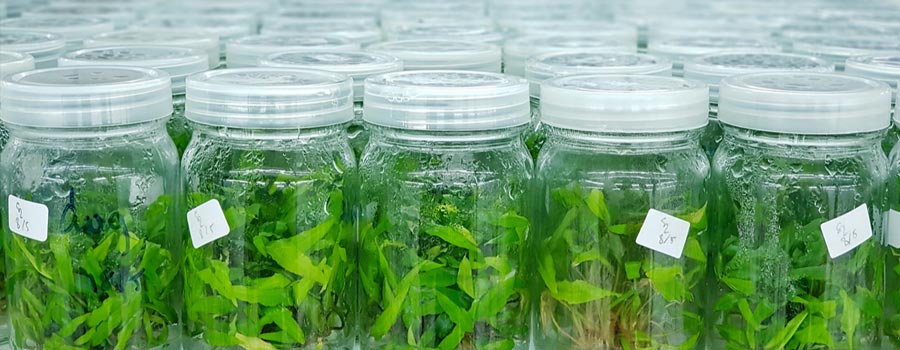
Starting in the 1800s, medical interest in cannabis surged worldwide. In fact, cannabis was seen as a type of panacea or cure-all: it was added to health tonics to provide various health benefits.
Many early pharmaceutical companies patented their cannabis-based concoctions, believing them to be valuable types of medicine. Before 1937, for example, there were at least 2,000 patented cannabis medicines produced by over 280 manufacturers.
What kept cannabis medicine from going mainstream? The syringe gave rise to injectable medicines, and the popularity of cannabis declined. The invention of pain relief medication like aspirin also weakened interest in cannabis.
One of the most notable cases of medical marijuana in modern times occurred in India in the 1830s, when Irish physician William Brooke O’Shaughnessy performed multiple studies on animals before testing his cannabis concoction on humans. O’Shaughnessy used cannabis to treat muscle spasms, stomach cramps, and general pain. Other doctors took note, and cannabis medicine experienced a surge in popularity throughout the mid-1800s as a result.
In the early 1900s, a number of companies released commercial cannabis products. In Scandinavia, for example, a beverage called Maltos-Cannabis was marketed as a health tonic. The cannabis-infused beverage was promoted as “an excellent lunch drink, especially for children and young people.” That product even won an international award in 1894! Maltos-Cannabis took home a prize at the Exposition Internationale d’Anvers in Antwerp, Belgium.
As scientific studies became more formal, researchers started connecting cannabis to specific health benefits. In the 1900s, for example, researchers realized that cannabis intoxication (i.e. being stoned) relieved intraocular pressure, suggesting that cannabis could be used for glaucoma and other eye conditions. The pressure caused by glaucoma can eventually lead to blindness. By relieving this pressure, cannabis can be an effective glaucoma treatment.
Today, with marijuana becoming increasingly legalized worldwide, more research is emerging on the health benefits of cannabis – and we’re discovering just how to correct ancient civilizations and researchers were about cannabis.
Medical Marijuana Pharmacology: How Does Cannabis Work?
Why does cannabis impact our body at all? What’s inside the cannabis plant that allows it to change our body? What’s the pharmacology of cannabis?
Endocannabinoids and their receptors are found throughout the human body: you can find endocannabinoid system receptors in your nervous system, internal organs, connective tissues, glands, and immune cells, for example.
Scientists describe the endocannabinoid system as having a “homeostatic role”, best summarized as the “eat, sleep, relax, forget, and protect” system. Research is increasingly showing that the endocannabinoid system also has a role in the pathology of many disorders. It also has protective functions in certain medical conditions.
Here’s how researchers in one review study published in 2017 explained the endocannabinoid system and its impact on the human body:
“It has been proposed that migraine, fibromyalgia, irritable bowel syndrome, and related conditions represent clinical endocannabinoid eCB [endocannabinoids] system deficiency syndromes…eCB system deficiencies have also been implicated in schizophrenia, multiple sclerosis (MS), Huntington’s disease, Parkinson’s disease, anorexia, chronic motion sickness, and failure to thrive in infants.”
In other words, your endocannabinoid system extends throughout the body, and this system seems to play a crucial role in all different types of bodily functions.
The endocannabinoid system consists of receptors, endogenous ligands, and ligand metabolic enzymes. When your cannabinoid receptors are stimulated, it creates a variety of physiological responses.
The specific chemical compounds in cannabis – the cannabinoids – interact with the human body in different ways.
THC, for example, interacts with CB1 receptors in the central nervous system. THC is the major psychoactive component in the cannabis plant.
CBD is the other well-known cannabinoid in the cannabis plant. CBD works much differently than CBD:
“Unlike THC, CBD elicits its pharmacological effects without exerting any significant intrinsic activity on CB1 and CB2 receptors. Several activities give CBD a high potential for therapeutic use, including antiepileptic, anxiolytic, antipsychotic, anti-inflammatory, and neuroprotective effects.”
Certain parts of the cannabis plant also seem to work without affecting the endocannabinoid system at all.
“Additional noncannabinoid targets are also linked to cannabis”, including “g-protein-coupled receptors” that affect mu and delta opioid receptors as well as “norepinephrine, dopamine, and serotonin”.
To summarize, we know that cannabis affects the endocannabinoid system, which is a system that impacts many crucial bodily functions. We also know that cannabis impacts other parts of the body outside of this system.
How Does Consumption Method Affect Cannabis Health Benefits?

This review study found, unsurprisingly, the three most common methods of administration for cannabis included inhalation via smoking, inhalation via vaporization, and ingestion of edible products.
Researchers found – again, unsurprisingly – that “the method of administration can impact the onset, intensity, and duration of psychoactive effects; effects on organ systems; and the addictive potential and negative consequences associated with use.”
So which administration method is best? Are certain administration methods better than others? Here’s what researchers found:
“The primary psychoactive constituent of marijuana – THC – is rapidly transferred from lungs to blood during smoking.”
In one study, researchers tested participants’ plasma immediately after smoking and found that THC was detected after the first inhaling, which demonstrates the efficient absorption of THC from the lungs. Additionally, THC levels “rose rapidly and peaked prior to the end of smoking”.
What about vaping? Researchers found that “vaporization provides effects similar to smoking while reducing exposure to the by-products of combustion and possible carcinogens and decreasing adverse respiratory syndromes.”
Meanwhile, eating THC (via an edible) is not as efficient as smoking it. One study compared THC absorption when administering THC orally, intravenously (by injection), and smoking. Researchers found that plasma levels of THC were similar after smoking and intravenous injections, although oral doses for edible cannabis products “were low and irregular, indicating slow and erratic absorption”.
In that study, the intravenous group and smoking group both achieved a similar high, with a fast onset of the high and steady decline over a four hour period. With the oral (edible) ingestion group, however, the onset of clinical effects was slower and lasted longer, although effects occurred at much lower plasma concentrations than with the other two methods.
When are you most high after smoking? Researchers in this study found that “effects reach their maximum after 15 to 30 minutes and taper off within two to three hours”.
Meanwhile, with oral (edible) cannabis, you feel high within 30 to 90 minutes, then you reach your maximum high within two to three hours, and that high lasts four to 12 hours, depending on the dose.
Side Effects of Marijuana: What Do Scientific Studies Say?
What does science say about the side effects of marijuana? Most have heard about the stereotypical side effects of marijuana – like the anxiety and increased appetite. But have these side effects been witnessed in peer-reviewed studies? Let’s take a closer look.
Researchers in the review study linked above concluded that:
“Short-term use of cannabis has led to impaired short-term memory; impaired motor coordination; altered judgment; and paranoia or psychosis at high doses.”
Meanwhile, long-term or heavy use of cannabis, especially in individuals who began using as adolescents, has led to “addiction; altered brain development; cognitive impairment; poor educational outcomes (e.g., dropping out of school); and diminished life satisfaction”.
Long-term, heavy use of cannabis “is also associated with chronic bronchitis and an increased risk of chronic psychosis-related health disorders, including schizophrenia and variants of depression, in persons with a predisposition to such disorders.”
Multiple studies have even found a connection between cannabis use and vascular conditions, stating that, “vascular conditions, including myocardial infarction, stroke, and transient ischemic attack, have also been associated with cannabis use.”
What about with medical cannabis users? Medical cannabis users are a different subset. They may have only started using marijuana later in life. Studies on medical marijuana users have found few serious adverse effects. As researchers concluded in this study:
“Of patients assigned to active treatment in these trials, a total of 4,779 adverse effects were reported; 96.6% (4,615) of these were not deemed by authors to be serious. The most common serious adverse effects included relapsing MS (9.1%; 15 events), vomiting (9.8%; 16 events), and urinary tract infections (9.1%; 15 events)… The most commonly reported non-serious adverse event was dizziness, with an occurrence rate of 15.5% (714 events) among people exposed to cannabinoids.”
Other negative adverse effects associated with acute marijuana use (i.e. one-time use), according to this study, included:
“…hyperemesis syndrome, impaired coordination and performance, anxiety, suicidal ideations or tendencies, and psychotic symptoms, whereas chronic effects may include mood disturbances, exacerbation of psychotic disorders, cannabis use disorders, withdrawal syndrome, and neurocognitive impairments, as well as cardiovascular and respiratory conditions.”
Benefits of Cannabis: What Do Modern Scientific Studies Say?
We’ve talked about some of the ways cannabis is used. But what are the actual benefits of cannabis? What do double-blind, placebo-controlled, peer-reviewed studies say about cannabis’s health benefits?
Let’s take a closer look at some of the most promising health and wellness benefits of cannabis.
Relieves Chronic Pain

It’s widely known that cannabis has analgesic effects (it reduces pain). However, we still exactly don’t know why cannabis reduces chronic pain.
“For chronic pain, the analgesic effect remains unclear,” concluded one review study on the health benefits of cannabis.
One of the biggest studies on cannabis and pain was published in the British Journal of Clinical Pharmacology in 2011. Researchers analyzed randomized controlled trials on how various forms of THC relieved pain. There were studies on smoked cannabis, edibles, and cannabis-based medicine. Tested pain conditions included neuropathic pain, fibromyalgia, rheumatoid arthritis, and mixed chronic pain.
In most of these studies, cannabis performed significantly better than a placebo for providing pain relief. 15 of the 18 trials “demonstrated a significant analgesic effect of cannabinoids compared to a placebo.”
Researchers added that cannabis use “was generally well tolerated” and concluded that “overall, evidence suggests that cannabinoids are safe and moderately effective in neuropathic pain with preliminary evidence in fibromyalgia and rheumatoid arthritis.”
In other words, we don’t really know how THC relieves chronic pain, but we do know we’ve witnessed this effect in multiple studies.
Anti-Nausea

Medical marijuana is frequently prescribed to treat chemotherapy-related nausea. Do studies back up the anti-nausea effects of cannabis?
Medical researchers call anti-nausea agents “antiemetics”. Here’s what researchers concluded after one review of 23 randomized, controlled trials on nauseas and marijuana:
“In a review of 23 randomized, controlled trials, patients who received cannabis-based products experienced less nausea and vomiting than subjects who received placebo.”
In some of the trials, participants were given cannabis or a traditional anti-nausea medication. In these trials, participants tended to prefer the cannabis-based medicines. In other words, even when given a drug that equally reduced nausea, participants preferred the cannabis-based medicine. Ultimately, researchers concluded that,
“cannabis-based medications may be useful for treating chemotherapy-induced nausea and vomiting that responds poorly to conventional antiemetics.”
Management of Neurological Disorders (Epilepsy, MS, Huntington’s Disease, and Others)
Researchers have also assessed the effectiveness of cannabis at treating epilepsy and other neurological disorders. Specifically, researchers have focused on CBD and neurological disorders instead of looking at THC.
“With regard to the management of neurological disorders, including epilepsy and MS, a Cochrane review of four clinical trials that included 48 epileptic patients using CBD as an adjunct treatment to other antiepileptic medications concluded that there were no serious adverse effects associated with CBD use but that no reliable conclusions on the efficacy and safety of the therapy can be drawn from this limited evidence.”
Despite these results, the FDA has approved CBD-based drugs like Epidiolex to treat certain types of seizures. The FDA was encouraged after positive early trials indicated that Epidiolex helped patients when no other anti-seizure medication was working.
Additionally, the American Academy of Neurology (AAN) has issued a review for clinicians that indicates oral cannabis “is effective for reducing patient-reported spasticity scores and central pain or painful spasms when used for MS.” However, the AAN found
“there is limited evidence to support the use of cannabis extracts for treatment of Huntington’s disease, levodopa-induced dyskinesias in patients with Parkinson’s disease, or reducing tic severity in Tourette’s.”
Reduced Anxiety

Many people use cannabis to relieve anxiety. Studies have indicated that cannabis does seem to have the ability to reduce anxiety and depression.
According to the World Health Organization, anxiety disorders are the sixth-largest contributor to disability worldwide.
Typically, anxiety and depression are treated with pharmaceutical drugs that can cause side effects like drowsiness, agitation, insomnia, sexual dysfunction and headaches. Meanwhile, medications like benzodiazepines can be addictive and lead to substance abuse.
CBD oil, on the other hand, has shown it could be an effective treatment for anxiety and depression.
In one study from Brazil, 57 men received either oral CBD or a placebo 90 minutes before they underwent a simulated public speaking test. Researchers found that a 300mg dose of CBD was the most effective at significantly reducing anxiety during the text. Interestingly, researchers found that men given the 300mg dose of CBD had reduced anxiety, while men given the 150mg dose, 600mg dose, or placebo had no significant differences in anxiety levels.
Improved Symptoms of Insomnia

Some studies have analyzed how CBD oil impacts insomnia.
This study, for example, found that CBD oil could be an effective treatment for insomnia and anxiety in children with post-traumatic stress disorder.
Reduced Depression

Up above, we talked about how CBD could treat anxiety and depression. Many of the anti-depression effects of CBD oil have been witnessed in animal studies.
In this study, for example, and this study, researchers found that CBD oil could impact the brain’s receptors for serotonin, a neurotransmitter that regulates mood and social behavior.
More widescale, human-based studies need to be performed to confirm these effects. However, early research on depression and CBD is promising.
Alleviate Cancer-Related Symptoms
Cannabis could reduce symptoms related to cancer. It could also reduce symptoms related to cancer treatment (chemotherapy), including nausea, vomiting, and pain. We talked about the anti-nausea and pain-relieving effects of cannabis above. But can CBD really reduce symptoms of cancer?
This study analyzed the effects of CBD and THC in 177 people with cancer-related pain who were not experiencing relief from normal pain medication. These people received an extract containing both THC and CBD or an extract containing only THC. The group that took both THC and CBD experienced significantly better relief from cancer pain.
This study, meanwhile, found that a 1:1 combination of THC and CBD administered orally via spray reduced chemotherapy-related nausea and vomiting better than standard treatment alone.
Anti-Cancer Agent
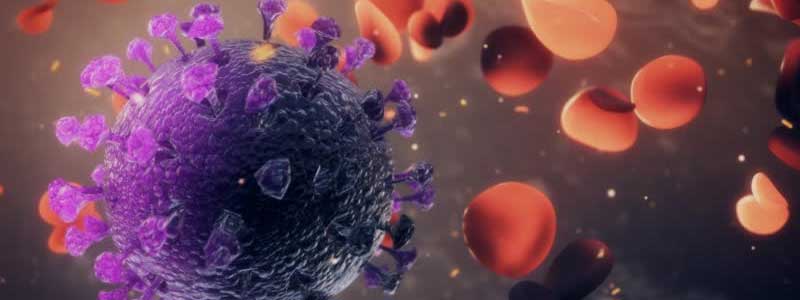
Cannabis might do more than just relieve cancer symptoms: it could actually have anti-cancer properties. Certain studies have shown that the chemical compounds in cannabis could impede cancer growth, killing cancer cells and reducing the spread of tumors.
Please note that these studies have been performed on test tubes and animals. Largescale human studies need to be performed before we declare cannabis an anti-cancer agent.
This test tube study, for example, found that concentrated CBD induced cell death in human breast cancer cells. Researchers placed CBD in a test tube with breast cancer cells, and the breast cancer cells died.
This study published in Molecular Cancer Therapeutics, meanwhile, tested those results on mice. Mice with breast cancer were given CBD. Researchers found that CBD inhibited the spread of aggressive breast cancer cells in mice.
Other studies have reinforced the idea that cannabis could encourage the death of cancer cells. This study, for example, found that CBD demonstrated anti-tumor effects in animals, reducing the spread of breast, brain, colon, lung, and prostate cancers.
Anti-Acne Agent

Approximately 1 in 10 people have acne. It’s a common skin condition – but could cannabis really relieve symptoms of acne?
First, it’s important to note that acne can be caused by a variety of factors, including genetics, bacteria, inflammation, and the overproduction of sebum, for example.
Researchers in this study published in the Journal of Clinical Investigation in 2014 found that CBD oil targeted one common cause of acne: it impacted sebum production. CBD oil reduced the production of sebum, acted as an anti-inflammatory, and prevented the activation of pro-acne agents like inflammatory cytokines. Researchers concluded that
“CBD has potential as a promising therapeutic agent for the treatment of acne vulgaris.”
In this study, meanwhile, researchers praised CBD, CBG, and other cannabinoids as an efficient and safe way to treat acne. Researchers were particularly impressed by the anti-inflammatory qualities of the cannabinoids:
“CBC, CBDV and especially THCV show promise to become highly efficient, novel anti-acne agents. Moreover, based on their remarkable anti-inflammatory actions, phytocannabinoids could be efficient, yet safe novel tools in the management of cutaneous inflammations.”
Widescale human studies on the anti-acne effects of cannabinoids, however, are rare. The studies above were performed on test tubes.
Neuroprotection

When a compound has neuroprotective properties, it means it protects brain cells. Some have suggested that cannabinoids could treat epilepsy, multiple sclerosis, and even Alzheimer’s Disease by acting as a neuroprotective agent.
What does science say?
First, Sativex (an oral spray containing both CBD and THC) has been proven to reduce muscle spasticity in patients with multiple sclerosis. That’s why Sativex is an approved drug. This study, for example, found that Sativex’s 1:1 THC/CBD combination reduced spasms in 75% of people. The study involved 276 people who were all experiencing muscle spasticity that was resistant to medications.
Another study involving 214 people with severe epilepsy found that they could achieve relief by taking 0.9 to 2.3 grams of CBD oil per pound of body weight, reducing seizures by a median of 36.5%.
Cannabis has also shown promise for improving quality of life for people with Parkinson’s, Alzheimer’s disease, and other neurological conditions.
Reduce Symptoms of Alzheimer’s Disease

Could cannabis reduce symptoms of Alzheimer’s Disease? Multiple studies have suggested that cannabis could prevent or delay the neurodegeneration associated with Alzheimer’s Disease.
This study, for example, found that CBD decreased inflammation and thereby reduced the neurodegeneration associated with Alzheimer’s Disease.
Meanwhile, in this study, researchers gave CBD to mice with Alzheimer’s Disease and found that CBD prevented cognitive decline.
Reduced Symptoms of Parkinson’s Disease

Cannabis may also reduce symptoms of Parkinson’s disease – or at least improve the quality of life of those with the disease.
This study, for example, found that CBD improved quality of life for people with Parkinson’s disease.
Then, in this study published in the Journal of Psychopharmacology in 2014, researchers found that CBD could improve sleep quality in patients with Parkinson’s disease.
Improve Cardiovascular Health

Some studies have shown that cannabis could benefit heart health. Cannabis may lower blood pressure, for example, reduce stress, and positively impact heart health in other ways.
One study gave nine healthy men a single dose of 600mg of CBD and found it reduced blood pressure compared to a placebo. The same study also gave the men a stress test that would normally increase blood pressure. The men in the CBD group experienced a smaller rise in blood pressure during the stress test than the placebo group.
Many studies have suggested that CBD improves heart health because it reduces anxiety.
However, certain studies have shown that cannabis could impact heart health in other ways – like by reducing damage to your heart. This study, for example, found that CBD reduced oxidative stress and prevented heart damage in diabetic mice with heart disease.
More human studies are needed to connect cannabis with improved heart health. However, reduced blood pressure and reduced anxiety is generally good for your cardiovascular health.
Substance Abuse Treatment
Cannabis may help break the cycle of addiction. One small study on rats found that CBD actually modified circuits in the brain related to drug addiction, reducing morphine dependence and heroin-seeking behavior.
Again, this study was on rats – not humans. However, early results suggest that cannabis could act as an aid for substance abuse treatment.
Decrease Opioid Use
Cannabis may decrease opioid use. Up above, we mentioned that states that had recently legalized marijuana also experienced a drop in overdoses and opioid use. Here’s what we know about state laws and marijuana usage:
States with medical marijuana laws had lower prescription rates both for opioids and for all drugs that cannabis could substitute
Based on data from 1999 to 2010, states with medical marijuana laws had lower death rates from overdoses of opioid pain medication
Other research, however, has been less definitive. A study analyzing data from 2004 to 2014, for example, found that passing medical marijuana laws was not associated with less non-medical prescription opioid use, suggesting that people with access to medical marijuana were not substituting marijuana for prescription opioids.
Meanwhile, a study from 2017 found that there were actually higher death rates from opioids in states with medical marijuana laws and that medical marijuana users were more likely than non-users to report taking prescription drugs.
Reduce Risk of Diabetes

Cannabis could reduce the risk of diabetes. Diabetic mice receiving CBD, for example, reduced their incidence of diabetes by 56%. Researchers also found that CBD reduced inflammation in treated mice.
Anti-Psychotic Effects
CBD could reduce the symptoms of schizophrenia and other mental disorders. This study published in Schizophrenia Research in 2015 concluded that:
“The first small-scale clinical studies with CBD treatment of patients with psychotic symptoms further confirm the potential of CBD as an effective, safe and well-tolerated antipsychotic compound, although large randomized clinical trials will be needed before this novel therapy can be introduced into clinical practice.”
Of course, multiple studies have indicated that cannabis increases the risk of developing schizophrenia.
Cannabinoids and Terpenes in Cannabis: What Does Science Say?
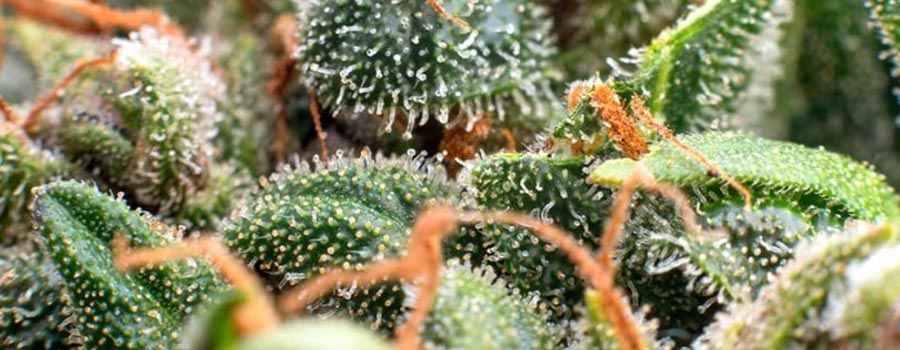
The cannabis plant has hundreds of cannabinoids and terpenes.
We’ve spent most of this page talking about the two best-known cannabinoids: THC and CBD. However, other cannabinoids like CBN, CBC, and CBG are starting to make a name for themselves.
Growing research has indicated that these cannabinoids may have unique benefits of their own. It’s an exciting time for cannabis research, and we’re learning more about these chemical compounds every year:
Tetrahydrocannabinol (THC): Provides the most significant psychoactive effects of cannabis (i.e. it gets you high). Historically, THC content was the focus of breeders, and breeders wanted to develop strains with the highest amount of THC possible to maximize the psychoactive properties.
Cannabidiol (CBD): CBD was little-known outside of the research community a decade ago. Today, it’s a household name. Cannabidiol relieves convulsions, soothes inflammation, and reduces symptoms of nausea, among other therapeutic properties.
Cannabinol (CBN): CBN is a mildly psychoactive cannabinoid that reduces intraocular pressure and could reduce the risk of seizures.
Cannabichromene (CBC): CBC appears to complement the analgesic (pain-relieving) effects of THC, and it could have calming or sedative effects of its own.
Cannabigerol (CBG): CBG appears to also have sedative effects. It may also have antimicrobial properties. Some studies have found that CBG lowers intraocular pressure.
Tetrahydrocannabivarin (THCV): THCV has shown some promise as a treatment for type 2 diabetes and other metabolic disorders.
There are plenty of other biologically-active molecules within the cannabis plant beyond cannabinoids, including flavonoids, terpenes, and terpenoids. These compounds seem to impact the flavor and smell of the strain, and they’re secreted by the glandular trichomes found most densely on the floral leaves and flowers of female plants.
Cannabinoid makeup varies widely between strains. Hemp, by law, contains less than 0.3% THC but typically contains high levels of CBD. Growers today, meanwhile, may breed strains with 20% THC and 10% CBD content to maximize the therapeutic effects of cannabis.
Using Nutritional Supplements While Consuming Cannabis Products
As we wrap the ultimate 2020 cannabis health and wellness guide, and begin a new chaper here at HealthMJ of researching wellness programs and reviewing health supplements, let's crack the seed on what the focus will be of cannabis users supplementing with various nutrition products in a quest to become the best version of yourself.
In the opening, we referenced the new movement of adding more whole body health concepts into our news publication and media portal. Because cannabis is a medicine first and recreational second, many users of cannabis are consuming marijuana and CBD as way to optimize their health. The HealthMJ Way wants to expand upon the scope of only cannabis or just CBD and create a holistic hub of knowledge, truth and wisdom when it comes to supplementing your wellness lifestyle with dietary products and nutrition programs.
The plans are already in motion for HealthMJ to enhance its research team and editor staff, as there seems to be a void in explaining cannabis use with health supplements like probiotics, multivitamins and minerals, herbal extracts, essential oils, juice mixes, protein powders, detox and cleanses and teas. Diets are also a hot topic worthy of research and review too, even covering popular subjects like intermittent fasting. HealthMJ plans to cover new medical studies, scientific discoveries and wellness enhancing revelations in a way that breaks down complex issues and distills them into simple, easy to understand nuggets of valuable information.
The expectations are high but within the HealthMJ wheelhouse. Reviewing popular nutrition supplements and trending health news will allow us to grow into the user-first media creation portal we set out to accomplish all these years ago.
Final Word on Healthy Cannabis Use

Cannabis is going worldwide. Nearly half of U.S. states have legalized medical marijuana in some form. Many other states have legalized the recreational use of cannabis.
Canada, meanwhile, has legalized recreational use of marijuana nationwide, and many other countries have decriminalized marijuana in small amounts (say, under 20g). It’s likely many more states and countries will end cannabis prohibition soon.
As more research on THC, CBD, and other cannabinoids gets revealed, cannabis is becoming increasingly valued as a medicine.
In conclusion, HealthMJ is extremely excited about the future of cannabis use for health and wellness. This overview allows us to expand into natural health supplements and wellness products using cannabis as a base and foundational piece to giving the world the gift of health The HealthMJ Way.
The main motive of HealthMJ is to always think of cannabis first and foremost, but as the demand for living an integrated lifestyle dawns upon us and marijuana and hemp become legalized, being healthy is vital to all of us and the use of natural wellness products is more important than ever before. Be on the look out for HealthMJ supplement reviews in 2020 and beyond.
Let us know what you think of the HealthMJ cannabis wellness guide! Be sure to stay tuned in to what we are saying, sharing and showing soon as new health supplement guides emerge!
